5 Ways to Make Youth Engagement More Meaningful at the UN: Reflections from the 2024 ECOSOC Youth Forum
By Nate Edwards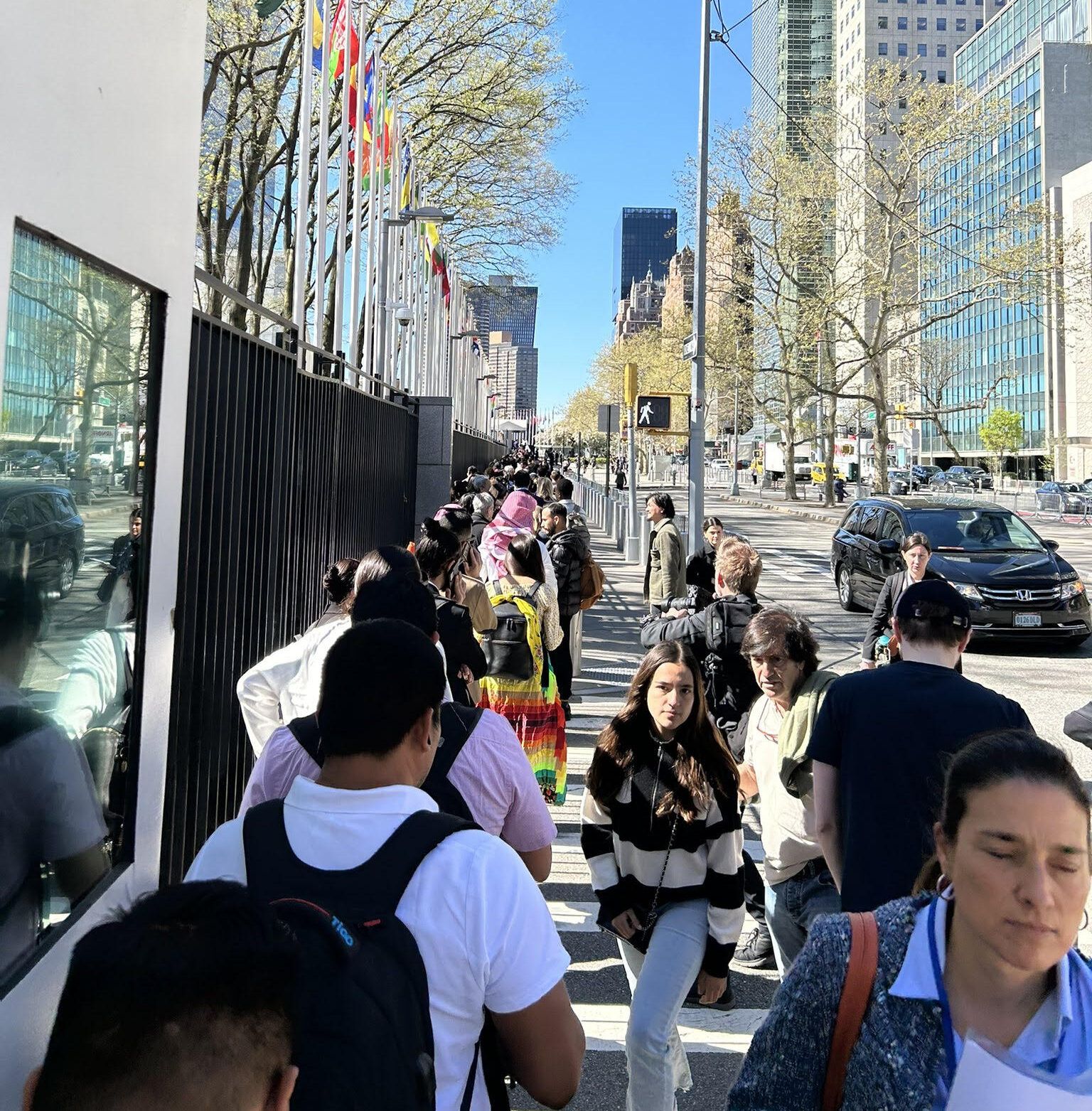
Former United Nations (UN) Secretary-General Dag Hammarskjöld once said, “Everything will be alright—you know when? When people, just people, stop thinking of the United Nations as a weird Picasso abstraction and see it as a drawing they made themselves.” At this year’s Economic and Social Council (ECOSOC) Youth Forum, the UN, once again, let young people into the art studio but gave them microphones instead of paintbrushes.
The UN has made admirable efforts over the years to meaningfully engage with youth (defined as 15-24) in the design of the global development agenda. This ambition was further concretized last year with the creation of the UN Youth Office, following the Office of the Secretary-General’s Envoy on Youth and the appointment of the first Assistant Secretary-General for Youth Affairs, Felipe Paullier of Uruguay.
In fact, since 2015, with UN Security Council Resolution 2250, the importance of youth participation in the UN has been progressively recognized. Agendas such as Youth, Peace, and Security, the 2030 Agenda and Our Common Agenda, as well as the New Agenda for Peace, continue to emphasize the need to engage youth in decision-making processes. The UN has openly encouraged member states to “expand and strengthen youth participation in decision-making at all levels” and “make meaningful engagement a requirement in all United Nations decision-making processes.” Meanwhile, initiatives such as the UN Foundation’s Our Future Agenda have catalyzed this cause and actively engaged young policymakers.
These efforts have set the UN on the right course. The upcoming Summit for the Future aims to reaffirm and realign the multilateral system towards common development priorities post-2030. With it, the importance of intergenerational development impacts has been acknowledged through the Declaration on Future Generations. With a youth population projected to grow to 1.3 billion by 2030, now is the right time for the UN to double down on youth participation in policymaking.
At the 2024 UN ECOSOC Youth Forum (Forum), over 1,000 young leaders from around the world called on policymakers to support meaningful youth engagement beyond tokenistic inclusion. Empowering youth is not just about letting them in; it is also about providing them with the support, tools, and knowledge to better their lives and those of their distinct communities. Now that the UN has let youth in, they need to fully realize the Youth 2030 Strategy and let #YouthLead.
Reflecting on the Youth Forum and borrowing lessons from the people-centered justice movement, here are 5 takeaways for UN officials looking to engage youth meaningfully:
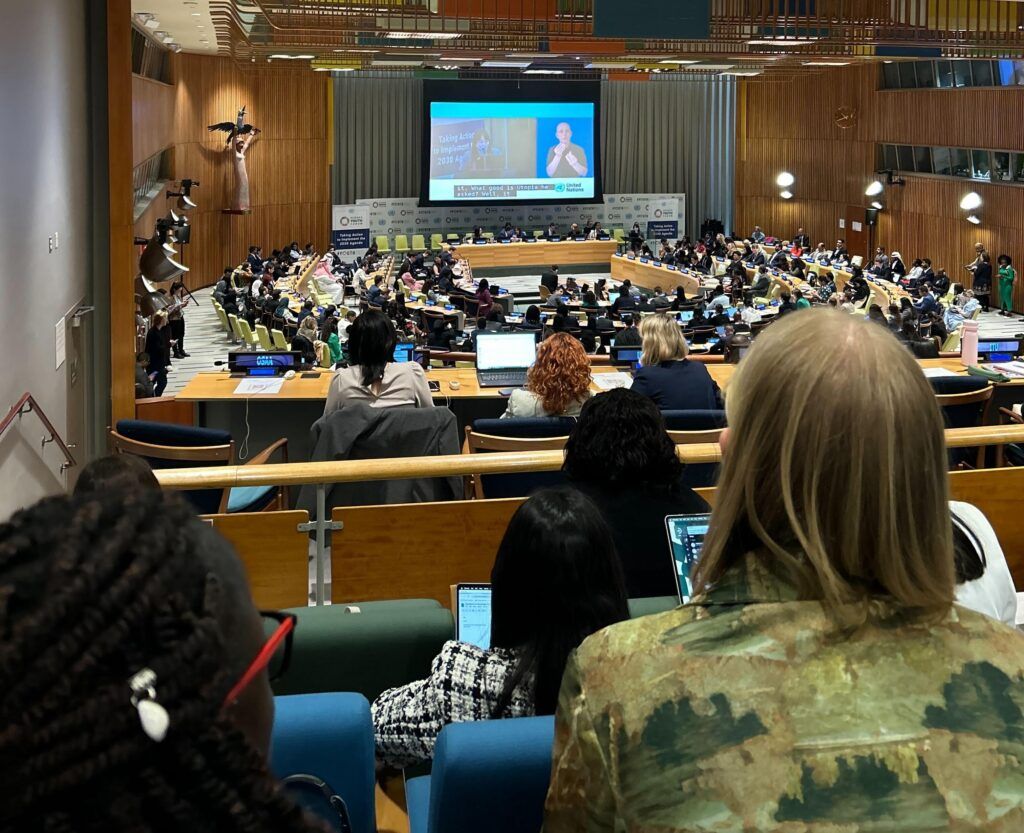
Inside the plenary at the 2024 ECOSOC Youth Forum, April 16, 2024.
1. Unlocking Access: Participation Leads to Meaningful Engagement
The responsibility of youth engagement with the UN has largely been placed on young people themselves. Throughout the Youth Forum, attendees emphasized the privilege they felt to come to New York amid the burdens of travel costs and visa applications. While the UN Major Group for Children and Youth’s (MGCY) Shannon Lisa highlighted the organization’s success in bringing 2,000 organizations to over 30 youth-led consultations in the past two years, the UN’s accessibility to a broader youth constituency remains a critical issue.
On the first day of the Forum, Alexandra Kulik, President of Sempre a Frente (“Alway Forward”) Foundation, argued that if we are to include young people in policymaking, we need to ensure they have information, a safe place, and basic needs met to participate freely. The UN and organizations in its ecosystem need to increase their support of youth in accessing the policymaking arena through visa sponsorships and resourcing. They also need to meet youth where they are in different regions around the world.
We must build on the mechanisms laid out in the Youth 2030 Strategy, such as the Youth Scorecards and toolkits, and thematic tools, such as the Youth, Peace, and Security National Action Plans. These practices have made strides in increasing engagement, particularly at the national level. However, this engagement has yet to be fully realized globally. The ECOSOC Youth Forum and many international forums remain platforms for the privileged few who can attend. Young people must be supported in engaging in thematic fora across the Sustainable Development Goals (SDGs) and national, regional, and global platforms.
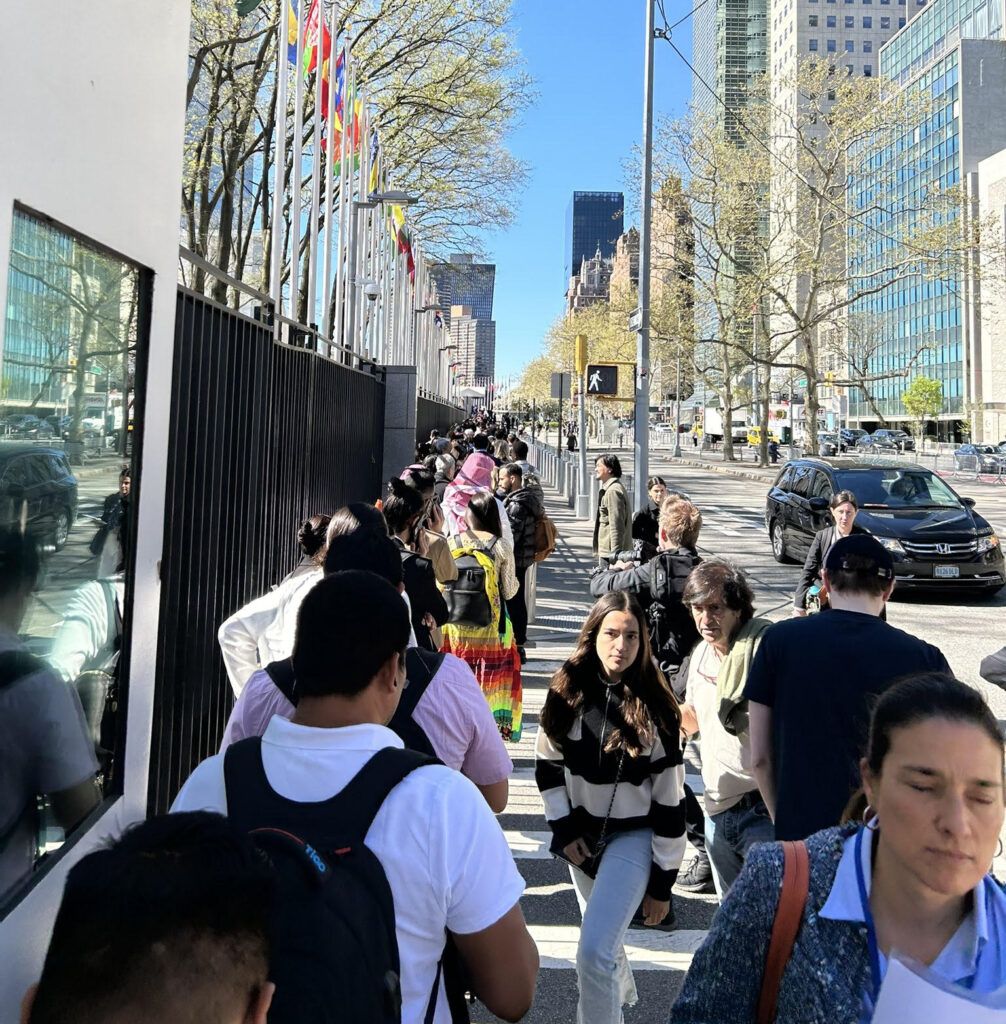
Youth line up to enter the UN for the 2024 ECOSOC Youth Forum on April 16, 2024
2. Design with Purpose: Form follows function
The Forum represented the inclusion of youth in the form of the UN. However, youth still need more opportunities to participate in its function. The need to advocate for youth engagement will dissipate when young people functionally participate in policymaking.
However, policymakers are unlikely to incorporate ideas from youth if those ideas fail to reflect an understanding of how the multilateral system works. Therefore, the UN needs to invest in education and training on how it operates to empower youth to engage with it effectively. This parallels a well-vetted practice in the justice sector known as “legal empowerment,” which supports individuals in understanding, shaping, and using the law to ensure their own rights.
At the international level, the UN comprises six governing organs encompassing dozens of commissions, departments, and agencies, all operating differently. Moreover, how it functions internationally differs from how it operates at the national level. Youth must be empowered to understand and engage with this system effectively nationally and globally. This knowledge empowers youth to impact the system on the one hand and supports Youth in holding the UN accountable for its policies on the other.
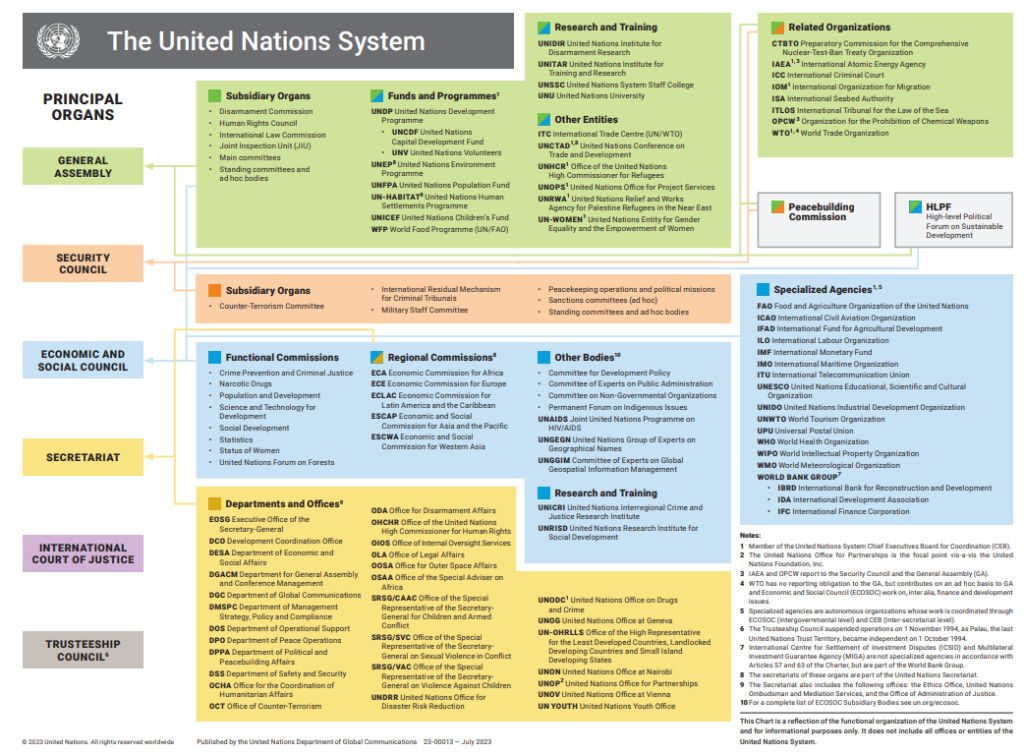
UN System Chart.
3. Youth seek more than a social movement; they demand sustainable, institutional change
Throughout the Forum, there was an emphasis on engaging young people as partners in policymaking, not just beneficiaries. During one side event, UN Youth Office’s Dr. Sudha Balakrishan highlighted the demographic divide between the age of decision-makers and those impacted by their decisions. She called for policymakers to go beyond tokenism and engage young people in decision-making by, in part, making the UN workforce younger and fit for the future. This will indeed institutionalize youth engagement, but it will also take time. In the meantime, bridge mechanisms should be created to ensure youth-led ideas, not just calls to action, are heard.
During the Forum, youth shared policy ideas from their home countries on topics ranging from climate financing to food security and gender equality to peacebuilding. They shared the practices that they deem effective in addressing the SDGs. There is an opportunity to build upon the forum to document and database these policies.
The UN can create a database where young people submit policy ideas they deem effective. Not a database on policies that target youth but evidence of what young people think works when achieving the SDGs. The UN Youth Office can help vet, fact-check, and assess these ideas. Meanwhile, practitioners can review this database to view policymaking through a youth lens. The database would give young people a platform to meaningfully contribute and give policymakers a chance to understand young perspectives better.
4. Justice: An overlooked tool for youth empowerment at the Forum
The Youth Forum focused on the SDGs that will be reviewed at the High-level Political Forum this July. Those include no poverty (1), zero hunger (2), climate action (13), peace, justice, inclusion and strong institutions (16), and partnerships (17). However, justice was rarely mentioned throughout the week.
As Young Justice Leader Vino Lucero says, “People-centered justice gives power to the powerless, it gives voice to the unheard, and space to the underserved and underrepresented.” Beyond political fora, we need to ensure access to justice for youth. Justice gives youth a tool to wield their advocacy voice and participate in achieving development goals around education, health, gender equality, climate action, and so many others. As Secretary-General António Guterres said, “Access to justice for all and effective, inclusive, and accountable institutions is a critical enabler for other SDGs.” Therefore, justice should receive greater attention as a goal in its own right and as a way to achieve the rest meaningfully.
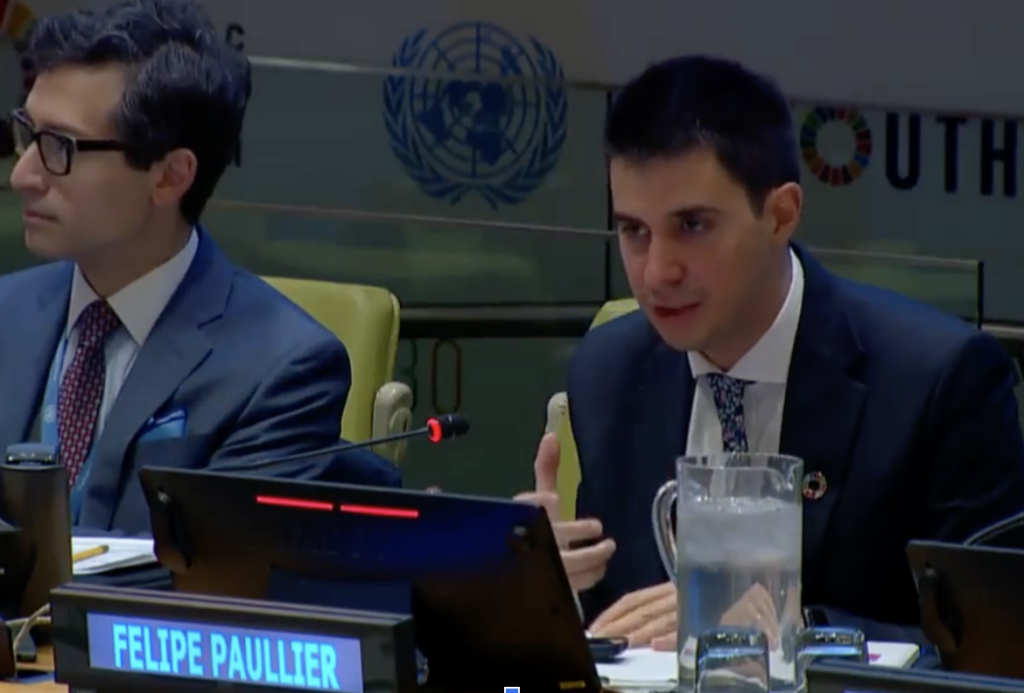
Assistant Secretary General Felipe Paullier speaks on the third day of the 2024 ECOSOC Youth Forum. April 18, 2024.
5. Youth and refugee leadership movements can learn from one another to influence the UN
The two movements share a common principle, “Nothing for us, without us,” and a common ambition to be meaningfully included, beyond tokenism, in decision-making processes. In December 2023, meaningful refugee participation was a key component of the Global Refugee Forum. Both this movement’s milestones and remaining challenges mirror many of those in the youth movement. Each movement embodies a people-centered approach to governance that ensures decision-making is based on the needs of the individuals. Both have found tactful ways to gain access to political processes. Greater peer exchange and coalition building between the two movements could help broker more leverage within governance systems.
The final day of the Youth Forum focused on the future, specifically, the Summit of the Future—where the post-2030 direction of the multilateral system will be rooted. In the final sessions, Assistant Secretary-General Felipe Paullier said, “The Summit [of the Future] is not about what is happening in September […], but it is about the negotiations that are taking place these [next] couple of months.” Key takeaways from the Forum will find their way into the discourse at the Summit of the Future and the content of the Pact for the Future. The biggest takeaway is that youth should help shape how the UN works.
For this to happen, however, there needs to be greater investment in accessibility, empowerment to understand the UN, institutionalized mechanisms for youth to participate beyond public fora, and attention to tools, like justice, that allow youth to be changemakers in their respective communities. There are also opportunities to exchange lessons and build coalitions across movements. The commitments have already been made. Now is the time to create an environment that enables the achievement of those commitments. With these investments, youth can become partners in deciding the future of global governance.
Related Resources
